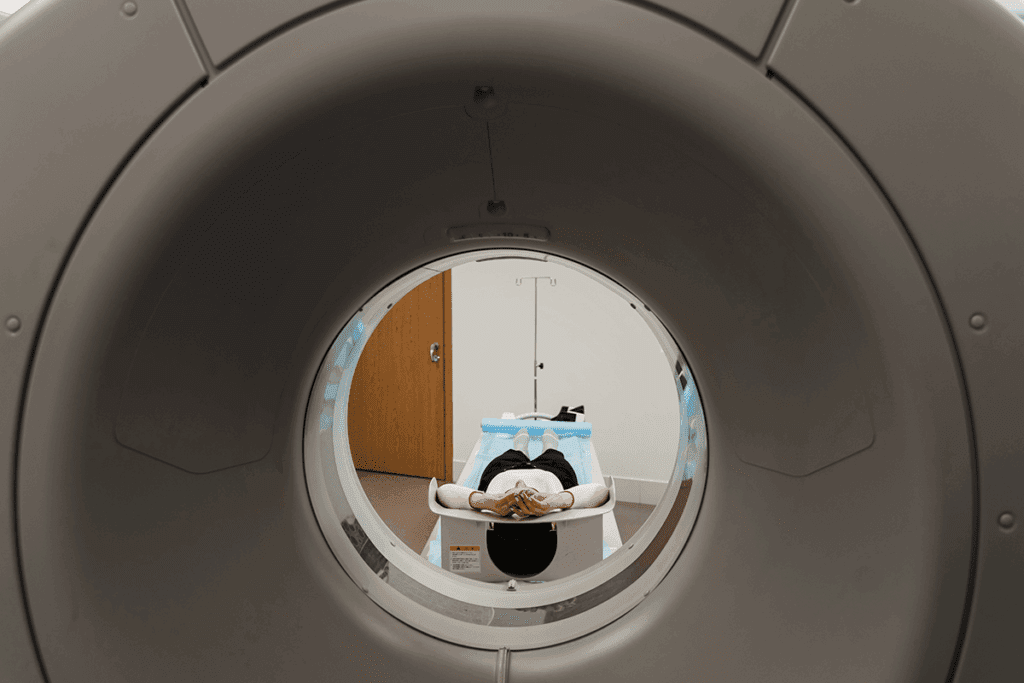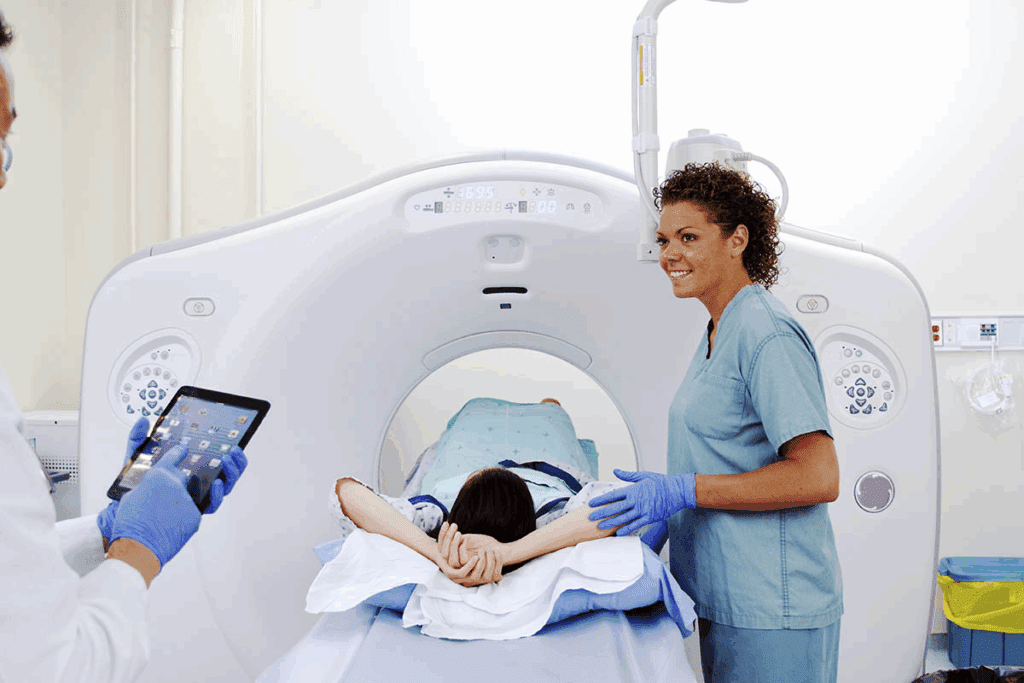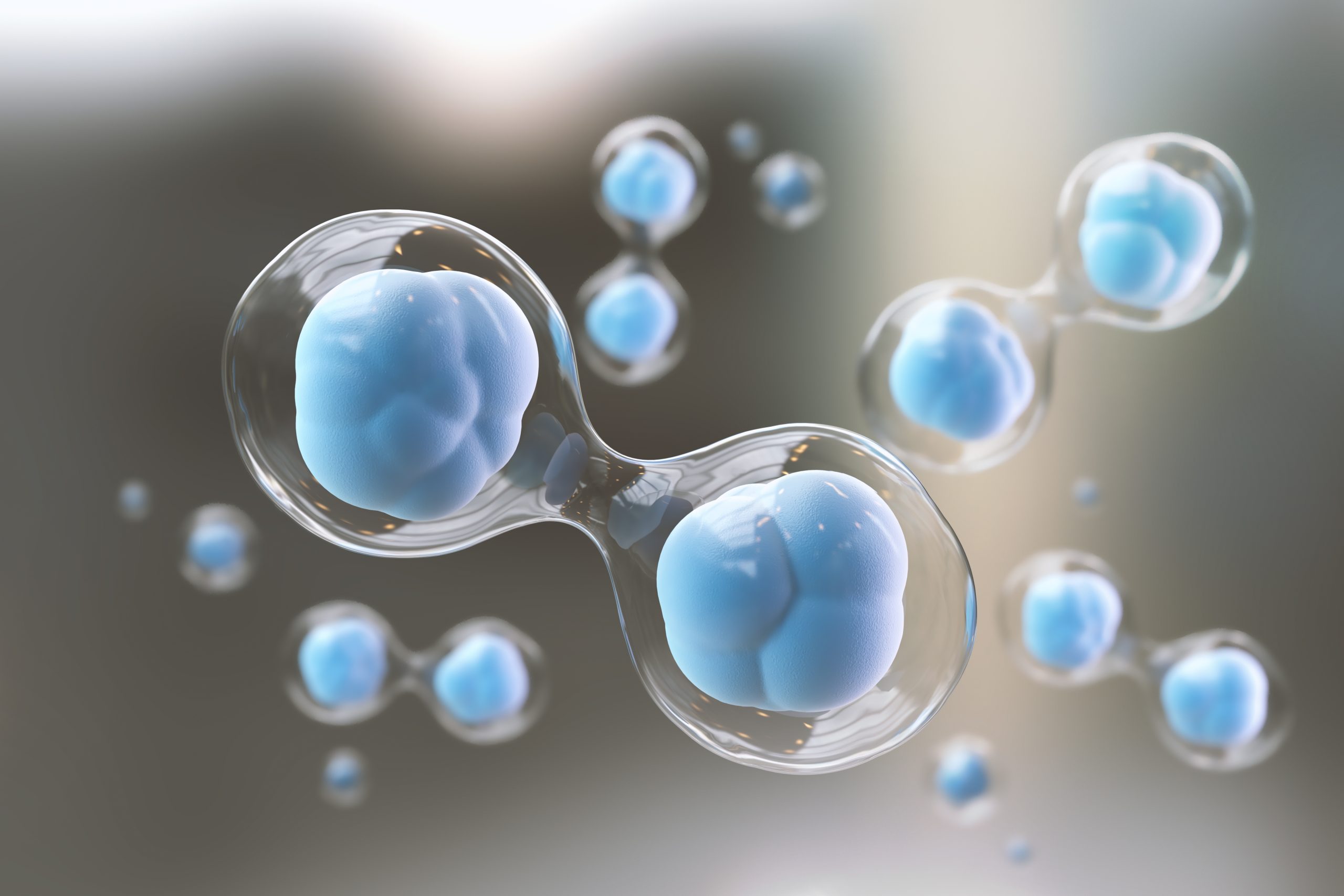Last Updated on November 27, 2025 by Bilal Hasdemir

Nearly 1.9 million new cancer cases are expected in the United States each year. Diagnostic imaging, like Fluorodeoxyglucose (FDG) PET scans, is key in finding and planning treatments. These scans help doctors spot areas with high activity that might show cancer.
An FDG PET scan shows how much FDG the body takes in. It lights up areas with more glucose use. But, this doesn’t always mean cancer. So, is FDG avidity always a cancer sign?
Key Takeaways
- FDG PET scans are vital for cancer diagnosis and treatment planning.
- FDG uptake is not just for cancerous cells.
- Understanding FDG avidity is key to reading PET scan results right.
- Other conditions can also cause high FDG uptake.
- Getting a correct diagnosis needs looking at more than just FDG avidity.
Understanding FDG and Its Role in Medical Imaging

FDG, or fluorodeoxyglucose, is a glucose-like substance used a lot in nuclear medicine. It’s key in PET scans for spotting and tracking diseases, like cancer.
What is Fluorodeoxyglucose (FDG)?
FDG is a made-up glucose molecule with a radioactive tag, usually Fluorine-18. This makes it grab onto cells in the body, mainly those that use a lot of glucose, like cancer cells.
Cells take up FDG because of special proteins. Inside the cell, FDG gets stuck by an enzyme. This lets doctors see how active cells are with PET scans.
How FDG Functions as a Radiotracer
As a radiotracer, FDG sends out positrons that meet electrons, making gamma rays. PET scanners can spot these rays. The more FDG a cell takes up, the more active it is, helping find cancer.
FDG is great at showing where cells are really busy, like in tumors. This helps doctors find tumors and see how serious they are.
Historical Development of FDG in Nuclear Medicine
FDG started being used in the 1970s, first for brain studies. Later, it became a big deal in fighting cancer.
New PET tech and more FDG have made finding cancer better. Now, FDG PET scans are a mainstay in fighting cancer.
| Year | Milestone |
| 1970s | Introduction of FDG in nuclear medicine |
| 1980s | Expansion of FDG use in oncology |
| 2000s | Widespread adoption of FDG PET scans in clinical practice |
The Science Behind FDG PET Scan Technology

Knowing how FDG PET scans work is key to understanding their results. This technology is a big help in finding diseases, like cancer.
Principles of Positron Emission Tomography
Positron Emission Tomography (PET) uses special imaging to find positrons from a tracer, like Fluorodeoxyglucose (FDG). When FDG goes into the body, it sticks to areas that are very active, like tumors. The PET scanner picks up these positrons, making detailed pictures of how the body works.
Glucose Metabolism and Cellular Uptake Mechanisms
FDG acts like glucose and gets taken in by cells. Cells that are very active, like cancer cells, take in more glucose and FDG. This happens because of special proteins on the cell surface. Once inside, FDG gets stuck, showing where the body is using a lot of glucose, often a sign of cancer.
Standard Uptake Value (SUV) Measurement
The Standard Uptake Value (SUV) shows how much FDG is taken in by tissues. It’s figured out by comparing the amount of FDG in a certain area to the body’s weight and how much was injected. A high SUV means the area is very active, which can mean cancer.
| Parameter | Description | Clinical Significance |
| SUVmax | Maximum SUV value within a lesion | Indicator of highest metabolic activity |
| SUVmean | Average SUV value within a defined region | Provides overall metabolic activity assessment |
| SUVpeak | SUV value within a small, predefined volume | Less sensitive to noise, used for response assessment |
Getting what SUV measurements mean is important for understanding FDG PET scans. By using SUV data with other info, doctors can make better choices for patients.
What Does “FDG Avid” Actually Mean?
The term “FDG avid” is often seen in medical imaging. But what does it really mean? In the case of FDG PET scans, “FDG avid” shows how much cells or tissues take up Fluorodeoxyglucose (FDG), a radioactive glucose analog.
Defining FDG Avidity in Clinical Context
FDG avidity measures how much cells or tissues take up FDG. This is linked to high metabolic activity, often seen in cancer cells. But, it’s important to know that not all high FDG uptake is cancerous. Many benign conditions can also show increased FDG uptake.
In medical practice, checking FDG avidity helps evaluate the metabolic activity of lesions or tumors. This is key for diagnosing, staging, and tracking how well cancers respond to treatment.
Quantitative vs. Qualitative Assessment of Uptake
FDG uptake can be looked at in two ways: qualitatively and quantitatively. Qualitative assessment means looking at PET scan images to spot areas with more uptake. Quantitative assessment, though, uses the Standardized Uptake Value (SUV) to measure FDG avidity more objectively.
The SUV is figured out by measuring activity in a specific area and comparing it to the dose given and the patient’s weight. This method helps compare metabolic activity across scans and track changes over time.
Intensity Scales and Reporting Standards
To make FDG PET scan reports clearer, intensity scales and criteria have been set. These scales help sort FDG uptake levels from low to high. For example, the Deauville criteria are used in lymphoma, rating FDG uptake on a 5-point scale compared to liver and blood pool activity.
Using standardized reporting criteria makes PET scan interpretations clearer. This helps doctors and patients understand each other better.
The Relationship Between FDG Avidity and Cancer
The link between FDG avidity and cancer is based on cancer cells’ unique metabolism. Cancer cells change how they use glucose, which FDG PET scans can spot.
Why Cancer Cells Often Show High FDG Uptake
Cancer cells grow fast and use a lot of glucose. This is why they take up a lot of FDG. FDG PET scans are great for finding and tracking cancer.
There are a few reasons for this high FDG uptake:
- Cancer cells have more glucose transport proteins (like GLUT1) on their surface.
- They have more hexokinase, which keeps FDG inside the cells.
- They use glycolysis for energy, even with oxygen around, known as the Warburg effect.
The Warburg Effect in Cancer Metabolism
The Warburg effect is key in cancer cell metabolism. Cancer cells use glycolysis for energy, even with oxygen. This means they need more glucose, which shows up as more FDG uptake.
Variations in FDG Avidity Among Different Cancer Types
Not all cancers are the same when it comes to FDG uptake. Some, like lymphoma and lung cancer, take up a lot of FDG. Others, like prostate cancer and some neuroendocrine tumors, take up less.
It’s important to understand these differences. This helps doctors read FDG PET scans right and choose the best treatments.
Common Cancers That Show High FDG Avidity
Many common cancers show high FDG avidity, making FDG PET scans very useful. These cancers have high metabolic activity that FDG PET scans can detect. We will look at some common cancers with high FDG avidity, their uptake patterns, and characteristics.
Lung Cancer and FDG Uptake Patterns
Lung cancer is a common cancer with high FDG avidity. The FDG uptake in lung cancer varies by tumor type and grade. Non-small cell lung cancer (NSCLC) often shows high FDG uptake, making it easy to spot on PET scans.
The Standardized Uptake Value (SUV) helps measure FDG uptake. It helps doctors assess tumor aggressiveness and treatment response.
A study on lung cancer PET scans found that tumors with higher SUV values had a worse prognosis. This shows how important FDG PET scans are for diagnosing and predicting lung cancer outcomes.
Lymphoma Subtypes and Their Avidity Characteristics
Lymphoma is another cancer type with high FDG avidity. Both Hodgkin lymphoma and non-Hodgkin lymphoma can have significant FDG uptake. The uptake level varies among lymphoma subtypes.
FDG PET scans are key in staging lymphoma and checking treatment response. They are very sensitive in finding lymphoma in lymph nodes and other areas, making them essential in managing lymphoma.
Diffuse large B-cell lymphoma often has high FDG avidity, making it easy to detect on PET scans. But, some slow-growing lymphomas may have lower FDG uptake, requiring careful PET scan interpretation.
Colorectal Cancer Imaging Features
Colorectal cancer also shows high FDG avidity, mainly in advanced stages. FDG PET scans help find primary tumors, check lymph nodes, and spot distant metastases. The colorectal cancer PET scan is key in staging and restaging, guiding treatment, and monitoring therapy response.
The FDG uptake pattern in colorectal cancer can reveal tumor biology. For example, mucinous colorectal tumors may have lower FDG avidity than non-mucinous types, making them harder to detect and assess.
Other Highly FDG-Avid Malignancies
Other cancers with high FDG avidity include breast cancer, melanoma, and head and neck cancers. FDG PET scans play a big role in diagnosing, staging, and planning treatment for these cancers.
FDG-avid lymph nodes are common in metastatic breast cancer, showing the importance of PET scans in detecting lymph node involvement. Melanoma and head and neck cancers also show high FDG uptake, making PET scans critical for assessing disease extent and treatment planning.
Cancers With Variable or Low FDG Uptake
Some cancers show low or variable FDG uptake, making PET scans tricky to read. It’s key to understand these variations for accurate diagnosis and treatment.
Prostate Cancer: Why It Often Shows Limited Avidity
Prostate cancer usually has low or moderate FDG uptake. This is because it grows slowly and has lower metabolic activity than other cancers. This makes it hard to use FDG PET scans for diagnosis or staging.
Table: FDG Uptake in Common Cancers
| Cancer Type | Typical FDG Uptake |
| Prostate Cancer | Low/Moderate |
| Neuroendocrine Tumors | Variable |
| Mucinous Carcinomas | Low |
| Hepatocellular Carcinoma | Variable |
Certain Neuroendocrine Tumors
Neuroendocrine tumors (NETs) have varying FDG uptake. This depends on their differentiation and grade. Well-differentiated NETs usually have low FDG uptake. Poorly differentiated ones may show more FDG avidity.
Mucinous Carcinomas and Their Imaging Challenges
Mucinous carcinomas have a lot of mucin, leading to low cellular density and FDG uptake. This makes them hard to spot with FDG PET scans.
The low metabolic activity of mucinous carcinomas means we need other imaging methods or different radiotracers.
Hepatocellular Carcinoma and Background Liver Activity
Hepatocellular carcinoma (HCC) can show variable FDG uptake. This is because the background liver activity can hide tumor uptake. The degree of FDG avidity in HCC can tell us about tumor differentiation and aggressiveness.
Non-Cancerous Conditions That Can Be FDG Avid
FDG PET scans are useful for more than just finding cancer. Many non-cancerous conditions can also show up on these scans. It’s important to know about these conditions to understand PET scan results correctly.
Inflammatory and Infectious Processes
Immune cells in inflammatory and infectious processes can cause high FDG uptake. This is because these cells are very active metabolically. For example, abscesses, pneumonia, and osteomyelitis can look like cancer on scans.
Examples of inflammatory conditions:
- Sarcoidosis
- Tuberculosis
- Granulomatous diseases
These conditions can lead to false positives if not correctly understood in the context of the patient’s health.
Autoimmune Diseases and Vasculitis
Autoimmune diseases and vasculitis can also show up on FDG PET scans. Conditions like rheumatoid arthritis, lupus, and giant cell arteritis can be very active metabolically. This makes it hard to tell if something is cancerous or not.
Key considerations:
- It’s important to look at the whole picture of the patient’s health
- The pattern of uptake can help tell if it’s cancer or not
- The intensity of uptake can also give clues
Post-Surgical and Post-Radiation Changes
Changes after surgery or radiation can also cause FDG uptake. It’s key to know about the patient’s surgery and radiation history to understand PET scan results.
Timeline of changes:
| Time Post-Treatment | Expected FDG Uptake |
| 0-3 months | High uptake due to inflammation and healing |
| 3-6 months | Gradual decrease in uptake |
| >6 months | Typically low uptake, unless there’s recurrence or complication |
Benign Tumors With High Metabolic Activity
Some benign tumors can also show high FDG uptake. This includes certain adenomas, fibroids, and some benign bone tumors. It makes diagnosis more challenging.
To make an accurate diagnosis, it’s important to look at all the information. This includes the patient’s history, the scan results, and sometimes a biopsy.
Physiologic FDG Uptake: Normal Findings on FDG PET Scans
Normal FDG uptake can sometimes look like disease if not understood. It’s key to know how different organs and tissues take up FDG. This knowledge helps in accurately reading FDG PET scans.
Brain and Cardiac Uptake Patterns
The brain uses a lot of glucose, so it shows high FDG uptake. Gray matter in the brain has a lot of FDG activity. White matter has less. The heart’s FDG uptake can vary, depending on the patient’s health and if they’ve eaten.
Cardiac FDG uptake changes with diet and insulin resistance. When fasting, the heart uses fats for energy, leading to lower FDG uptake.
Gastrointestinal and Genitourinary Tract Activity
The gut’s FDG uptake changes due to digestion and bacteria. The kidneys and urinary system also show FDG activity, as it’s excreted in urine.
It’s important to know that some FDG activity in these areas is normal. It shouldn’t be mistaken for disease.
Muscle and Brown Fat Uptake
Muscle activity before a scan can increase FDG uptake. Brown fat, found in certain body areas, also shows high FDG uptake, more so in cold or in those with higher BMI.
Bone Marrow and Lymphatic Tissue
Bone marrow and lymph nodes can have varying FDG uptake. Bone marrow activity increases with inflammation or infection. Lymph nodes show FDG uptake as part of immune function.
| Organ/Tissue | Typical FDG Uptake Pattern | Factors Influencing Uptake |
| Brain | High uptake in gray matter | Glucose metabolism |
| Heart | Variable uptake | Fasting status, insulin resistance |
| Gastrointestinal Tract | Variable uptake | Peristalsis, gut flora |
| Muscle | Increased uptake with activity | Physical activity, muscle tension |
| Brown Fat | High uptake | Cold exposure, BMI |
Clinical Applications of FDG PET Scan in Oncology
In oncology, FDG PET scans are key for managing cancer. They help in accurate staging, checking treatment response, and finding recurrence. Their ability to show tumor metabolism is vital for making treatment decisions.
Cancer Staging and Restaging Protocols
FDG PET scans are used a lot for cancer staging and restaging. They are good at finding tumor cells that are active. Knowing how far cancer has spread is key for treatment planning.
Using FDG PET scans helps improve patient outcomes. They show cancer spread more accurately than other imaging methods.
Key benefits of FDG PET scans in cancer staging include:
- Improved accuracy in detecting primary tumors and metastases
- Enhanced assessment of lymph node involvement
- Better differentiation between malignant and benign lesions
Treatment Response Assessment
Checking how well treatment is working is important in cancer care. FDG PET scans help by showing changes in tumor metabolism. This lets doctors know if treatment is working early on.
| Treatment Response Criteria | FDG PET Scan Findings |
| Complete Response | No residual FDG uptake |
| Partial Response | Reduced FDG uptake |
| Stable Disease | No significant change in FDG uptake |
| Progressive Disease | Increased FDG uptake |
Recurrence Detection Strategies
Finding cancer recurrence early is important for better patient outcomes. FDG PET scans are great at spotting recurrence, even when patients don’t show symptoms. Their high sensitivity makes them perfect for follow-up and surveillance.
FDG PET scans can detect recurrence in various types of cancer, including:
- Lung cancer
- Lymphoma
- Colorectal cancer
- Other malignancies
Radiation Therapy Planning Applications
FDG PET scans are also used in planning radiation therapy. They give detailed info on tumor metabolism and size. This helps in giving precise radiation doses to tumors while protecting healthy tissues.
Using FDG PET scans in radiation therapy planning makes treatment more precise. As oncology advances, FDG PET scans will play an even bigger role in cancer management.
Common Pitfalls in FDG PET Scan Interpretation
Interpreting FDG PET scans is complex and can lead to errors. It’s important to know what the scans can and cannot show.
False Positives: When Non-Cancer Mimics Malignancy
FDG PET scans can sometimes show false positives. This means they might show non-cancerous conditions as cancer. For example, inflammatory processes like infections can look like cancer on these scans.
A study showed that some non-cancerous lung nodules can look like cancer on FDG PET scans. This is because they both can have high SUVmax values.
| Condition | Characteristics | FDG Uptake Pattern |
| Inflammatory Processes | Often associated with infection or autoimmune diseases | Typically focal, can be intense |
| Granulomatous Diseases | Conditions like sarcoidosis | Can have multifocal uptake |
| Post-Surgical Changes | Changes after surgical intervention | Variable, often diffuse |
False Negatives: When Cancer Is Missed
False negatives are another issue. Some cancers, like mucinous carcinomas, might not show up well on FDG PET scans. This is because they don’t take up much FDG.
For example, prostate cancer often doesn’t show up well on these scans. This is because it doesn’t take up much FDG.
Technical and Patient-Related Factors
Several technical factors can affect FDG PET scans. This includes the scanner’s quality and how the images are made. Patient factors, like blood sugar levels and body size, also matter.
High blood sugar can make tumors harder to see on scans. This is because it competes with FDG for uptake in tumors.
Knowing about these issues helps doctors make better decisions. It ensures they don’t miss cancer or mistake non-cancer for cancer.
Advanced FDG PET Techniques and Developments
New advancements in FDG PET imaging are changing how we diagnose and treat cancer. These changes come from better imaging tech and computer methods. They offer hope to patients all over the world.
PET/CT and PET/MRI Fusion Imaging Benefits
Combining PET with CT or MRI has made diagnoses more accurate. PET/CT fusion imaging mixes PET’s metabolic info with CT’s body details. This gives a clearer picture of tumors.
- Improved tumor localization
- Enhanced detection of small lesions
- Better assessment of tumor spread
Dynamic and Delayed Imaging Protocols
Dynamic PET imaging tracks the tracer’s movement over time. It shows how tumors work and behave. Delayed imaging scans patients later, helping tell if a lesion is cancerous or not.
- Dynamic imaging for assessing tumor metabolism
- Delayed imaging for evaluating tracer retention
Artificial Intelligence in PET Interpretation
The use of artificial intelligence (AI) in reading PET scans is growing fast. AI helps make sense of complex PET data. This makes diagnoses more accurate and saves time.
- AI-assisted detection of abnormalities
- Quantification of PET data
- Personalized medicine approaches
Alternative Radiotracers Beyond FDG
Medical imaging is getting better, thanks to new radiotracers for cancer diagnosis. While FDG is key, scientists are making new tracers to fix its flaws and get better results.
Specialized Tracers for Specific Cancers
Different cancers need their own radiotracers because they work differently. For example, prostate-specific membrane antigen (PSMA) PET/CT is great for prostate cancer. Fluorocholine and fluciclovine are also used for certain cancers.
“Targeted radiotracers are a big step forward in personalized medicine,” says a top researcher. “They help us find cancer more accurately and choose the right treatment.”
Emerging Molecular Imaging Agents
New agents in molecular imaging are being made to target different biological processes. Hypoxia imaging agents like FMISO and HX4 help find low oxygen spots in tumors. This is important because low oxygen can make tumors hard to treat.
- PET tracers for assessing tumor proliferation, such as FLT (3′-deoxy-3′-fluorothymidine)
- Apoptosis imaging agents that detect programmed cell death
- Angiogenesis tracers that visualize the formation of new blood vessels
Comparative Advantages Over Standard FDG
New radiotracers have big advantages over FDG. They can be more specific for certain cancers and show different tumor details. For example, some tracers can show how aggressive a tumor is or how well it’s responding to treatment.
A study showed that sometimes, these new tracers are better than FDG. They can cut down on false positives and find small or quiet tumors better.
As research keeps going, we’ll see these new radiotracers used more in treating cancer. This will make cancer diagnosis and treatment planning more precise and effective.
Conclusion: The Role of FDG Avidity in Cancer Diagnosis
Understanding FDG avidity is key in cancer diagnosis. It helps identify and manage different cancers. FDG PET scans are vital in oncology, showing how cells use glucose and their activity.
FDG plays a big role in cancer diagnosis. But, high FDG uptake doesn’t always mean cancer. Inflammation and infections can also cause high uptake. So, it’s important to understand the biology and context behind FDG PET scan results.
In summary, FDG avidity is essential in cancer diagnosis. Its accurate interpretation is vital for managing cancer well. By knowing the strengths and limits of FDG PET scans, doctors can make better decisions. This leads to better care and outcomes for patients.
FAQ
What does FDG avid mean in a PET scan?
FDG avid means cells or tissues take up Fluorodeoxyglucose (FDG) a lot. This shows they are very active. In PET scans, it often means cancer is present. But, it can also show up in other conditions.
Is FDG avidity always indicative of cancer?
No, FDG avidity doesn’t always mean cancer. While many cancers take up a lot of FDG, other conditions like inflammation or infections can too. Some benign tumors can also show high FDG uptake.
What is the role of FDG in PET scans?
FDG is a special tracer in PET scans. It shows where cells are most active. This helps find areas like cancer because they use a lot of glucose.
How is FDG avidity measured in PET scans?
FDG avidity is measured by the Standard Uptake Value (SUV). It compares the FDG uptake in a certain area to the body’s average. This helps understand how active an area is.
Can benign conditions show high FDG uptake?
Yes, some non-cancerous conditions like inflammation or infections can show high FDG uptake. This might lead to thinking there’s cancer when there isn’t.
What are some common cancers that show high FDG avidity?
Many cancers show high FDG uptake, like lung cancer, lymphoma, and colorectal cancer. The level of uptake can vary between different cancers.
Are there cancers that do not show significant FDG uptake?
Yes, some cancers like certain prostate cancers or neuroendocrine tumors might not show much FDG uptake. This makes them harder to find with FDG PET scans.
How do PET/CT and PET/MRI fusion imaging benefit cancer diagnosis?
PET/CT and PET/MRI fusion imaging combine metabolic info from PET scans with detailed images from CT or MRI. This makes cancer diagnosis and staging more accurate.
What is the significance of physiologic FDG uptake in PET scans?
Physiologic FDG uptake shows how different organs and tissues normally take up FDG. Knowing this helps avoid mistakes in PET scan readings.
How are false positives and false negatives managed in FDG PET scan interpretation?
To handle false positives and negatives, consider the patient’s overall health and compare PET scan results with other imaging. Being aware of technical and patient factors is also key.
Reference
- Treglia, G., Bertagna, F., Aloj, L., & Giovanella, L. (2014). Diagnostic and prognostic value of FDG PET/CT in infectious and inflammatory diseases according to clinical practice: A review of the literature. Clinical and Translational Imaging, 2(3), 245–260. https://pmc.ncbi.nlm.nih.gov/articles/PMC4163195/






